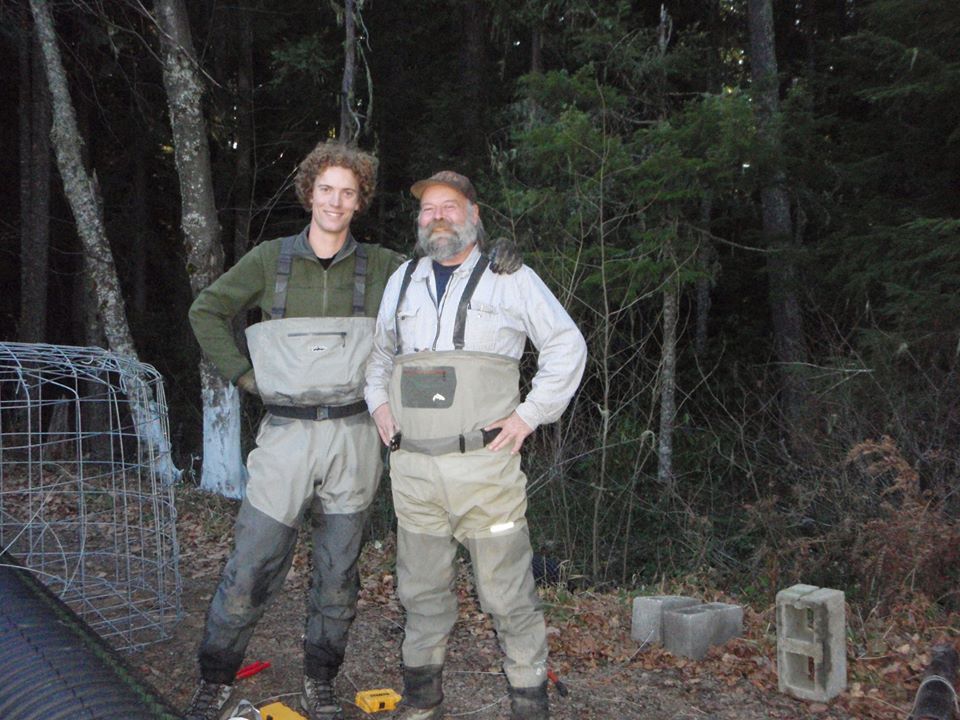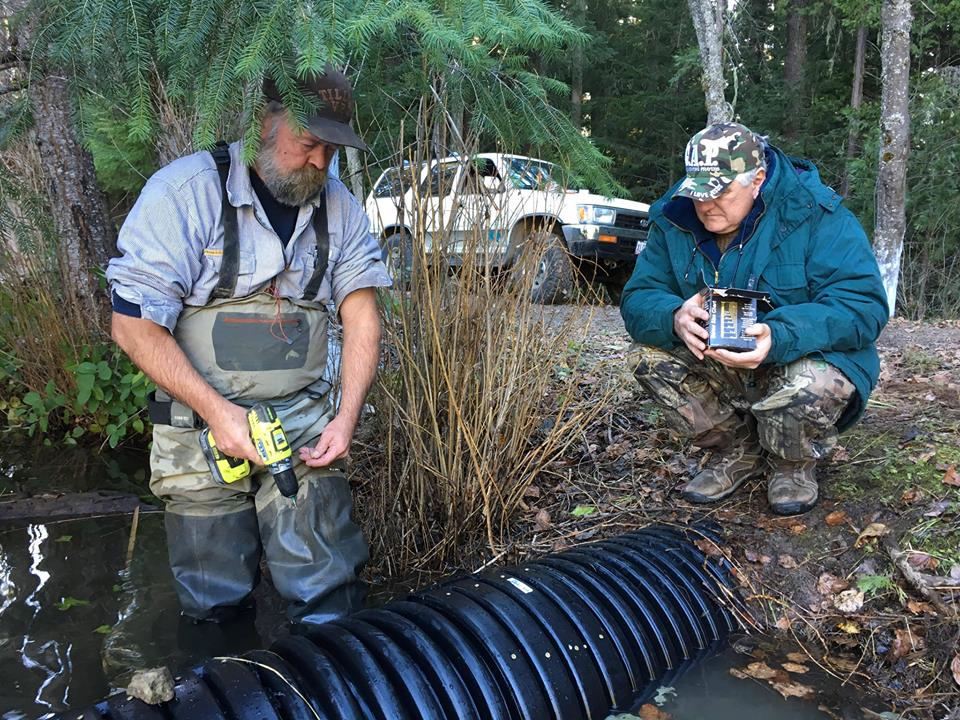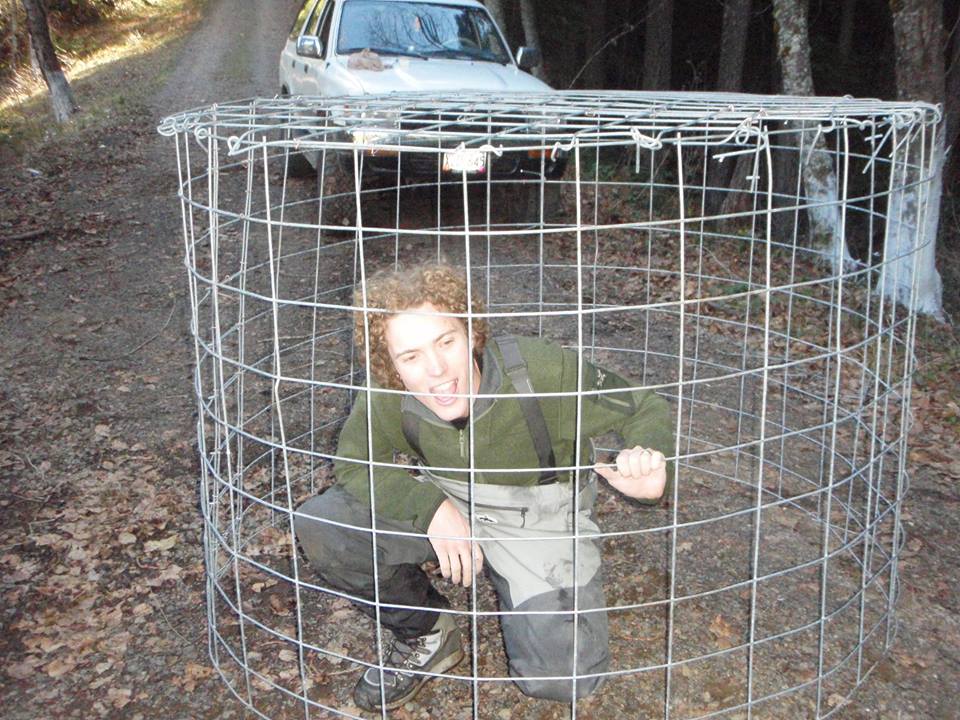 Finally there is a little pause in the fire and beaver excitement to let us talk about something that’s been tapping on our window since it dropped a few days ago. Rob Rich’s excellent article in the News Letter of the North American Plant Society. It is a fantastic 3-page tightly written article written well above it’s station. Rob and used to write for High Country News, but the demands of life required him to move east and take a real job. This article reminds us that he’s just biding his time with swans until he can swoop back on the scene.
Finally there is a little pause in the fire and beaver excitement to let us talk about something that’s been tapping on our window since it dropped a few days ago. Rob Rich’s excellent article in the News Letter of the North American Plant Society. It is a fantastic 3-page tightly written article written well above it’s station. Rob and used to write for High Country News, but the demands of life required him to move east and take a real job. This article reminds us that he’s just biding his time with swans until he can swoop back on the scene.
If we are indeed what we eat, the North American beaver (Castor canadensis) is one of the most miraculous plants around. Contrary to what Mr. and Mrs. Beaver in the Chronicles of Narnia have led readers to believe, beavers do not eat fish or anything else with animal flesh. As unwavering herbivores, beavers have marched an evolutionary path with plants that has become increasingly specialized. A whopping 33 genera of prehistoric beavers roamed the Earth in previous millennia, exhibiting different lifestyles than we see today.
Isn’t that an excellent beginning to an article? Aren’t you intrigued? Go get that cup of coffee and settle in for one of those reads that feel like the best kind of scalp massage = one that leaves you smarter and more energized.
 It may not be possible to answer why modern beavers co-evolved so closely with plants, but the beaver’s tools for herbivory help us appreciate how they persist with such impact. Robust incisors are a hallmark of every rodent; since rodents must gnaw to keep these constantly growing teeth short and harp, most have evolved horticultural habits. But only the beaver, North America’s largest rodent, is so completely built for forestry. Iron minerals in wood harden the enamel on the outside of a beaver’s incisors to a deep red-orange; these teeth are honed into chisels as they wear against the soft white dentine on the inner sides of lower teeth. Thick zygomatic arches (cheekbones) support large masseter muscles that, when coupled with stout molars, aid the beaver in grinding wood to pulp. Dexterous front paws allow versatility in digging, hauling and nimble weaving, while flippered hind feet with thick-boned hind legs offer aquatic propulsion and heavy-duty support. The beaver is masticator, feller-buncher, skidder and forwarder all in one – and a whole lot lighter on the land than most forestry equipment.
It may not be possible to answer why modern beavers co-evolved so closely with plants, but the beaver’s tools for herbivory help us appreciate how they persist with such impact. Robust incisors are a hallmark of every rodent; since rodents must gnaw to keep these constantly growing teeth short and harp, most have evolved horticultural habits. But only the beaver, North America’s largest rodent, is so completely built for forestry. Iron minerals in wood harden the enamel on the outside of a beaver’s incisors to a deep red-orange; these teeth are honed into chisels as they wear against the soft white dentine on the inner sides of lower teeth. Thick zygomatic arches (cheekbones) support large masseter muscles that, when coupled with stout molars, aid the beaver in grinding wood to pulp. Dexterous front paws allow versatility in digging, hauling and nimble weaving, while flippered hind feet with thick-boned hind legs offer aquatic propulsion and heavy-duty support. The beaver is masticator, feller-buncher, skidder and forwarder all in one – and a whole lot lighter on the land than most forestry equipment.
I just love the idea of the beaver being a whole forestry team. It takes so many men and equipment to bring down trees, I learned that when we took down the huge beetled-slain ponderosas from my parents property a few years ago. Hours and hours of noise and machines. Beavers do it alone.
Other than the porcupine, the beaver is the only mammal that is truly xylophagous (wood-eating), a term typically reserved for insects like termites or bark beetles. Stretched out, a human’s intestine will be about four times as long as his or her body, but a beaver’s intestine spans six times its body length, given its role in digesting complex plant compounds with elaborate molecular chemistry. From phenols like 4-ethyphenol to ketones like 3-hydroxyacetophenone, beavers concentrate at least 24 aromatic compounds into castoreum, a unique secretion that is useful in olfactory communication among fellow beavers.
This got my attention. I had never thought of how unique wood-eating was. or how specialized beaver equipment had to be to subsist on it. Honestly the entire article is facinating. I’ll embed it here and you have to promise to go read it. It’s only a matter of time before Rob is back on the beaver beat. Mark my words.
It is crucial to note that the dam is not merely a product, but a work-inprogress that catalyzes plant succession. In the right place and time, felling trees for dams floods more trees; these efforts open access to more trees for more dams and more flooding. All this work affirms the tight social units of beaver families and provides a model that two-yearold beavers take with them when they disperse. But, of course, this process is not as linear as it sounds. Inevitably, dams will need patching when topographical constraints intervene or streams in spring runoff change course. Partly by choice and partly by chance, these imperfections mean that beavers make and remake a complex mosaic of microhabitats, supporting life that would not otherwise exist. Research has found that beavers are keystone species in part because they create and engineer wetlands, and wetlands are hotspots of biodiversity. In upstate New York, beaver-shaped wetlands contribute as much as 25% of the total herbaceous plant species richness in the riparian zone
I love the sentence in blue beyond all the others, and I love the others a lot. It so amazing that not only do beavers create wetlands, but their constant maintenance and recreation improve and expand the territories of so very many other plants and animals. The impact beavers have an fish and frogs is talked about a great deal, it’s really valuable to have such a powerful writer documenting their impact on plants as well.
But here in North America, where beavers are a native, necessary force of nature, we should be thankful for all the ways they have conditioned the hydrated lands we call livable, arable, diverse and beautiful…People increasingly accept that live beavers are worth far more in the ecosystem services they provide. In various collaborative efforts across the continent, restoration is underway. Some people are reintroducing beavers to old haunts. Others are planting native shrubs and trees or building “beaver dam analogues” to restore degraded habitat and induce beavers to return.
Still others are improving tools for non-lethal conflict prevention to increase landowner tolerance. And the growing movement couldn’t have come sooner because, now more than ever, we need the beavers’ water-storing, fire-buffering, habitat-diversifying feats to reverse species loss and adapt to a rapidly changing climate. No other animal can so masterfully make use of plants to inspire hope for our planet. If you’re lucky enough to find a scat or see this live rodent in action, you might just become a Beaver Believer.
You see why I’ve been chomping at the bit waiting to share this. I’ve already sent to everyone I can think of. It’s beyond exciting to think about some dedicated horticulturists thumbing through their issue and thinking, hey that’s interesting. Maybe beavers are good?
Here’s the whole thing for you to peruse. Rob did an amazing job. But beavers inspire greatness, we have learned that over the years.
Beavers in Native Plants





 It may not be possible to answer why modern beavers co-evolved so closely with plants, but the beaver’s tools for herbivory help us appreciate how they persist with such impact. Robust incisors are a hallmark of every rodent; since rodents must gnaw to keep these constantly growing teeth short and harp, most have evolved horticultural habits. But only the beaver, North America’s largest rodent, is so completely built for forestry. Iron minerals in wood harden the enamel on the outside of a beaver’s incisors to a deep red-orange; these teeth are honed into chisels as they wear against the soft white dentine on the inner sides of lower teeth. Thick zygomatic arches (cheekbones) support large masseter muscles that, when coupled with stout molars, aid the beaver in grinding wood to pulp. Dexterous front paws allow versatility in digging, hauling and nimble weaving, while flippered hind feet with thick-boned hind legs offer aquatic propulsion and heavy-duty support. The beaver is masticator, feller-buncher, skidder and forwarder all in one – and a whole lot lighter on the land than most forestry equipment.
It may not be possible to answer why modern beavers co-evolved so closely with plants, but the beaver’s tools for herbivory help us appreciate how they persist with such impact. Robust incisors are a hallmark of every rodent; since rodents must gnaw to keep these constantly growing teeth short and harp, most have evolved horticultural habits. But only the beaver, North America’s largest rodent, is so completely built for forestry. Iron minerals in wood harden the enamel on the outside of a beaver’s incisors to a deep red-orange; these teeth are honed into chisels as they wear against the soft white dentine on the inner sides of lower teeth. Thick zygomatic arches (cheekbones) support large masseter muscles that, when coupled with stout molars, aid the beaver in grinding wood to pulp. Dexterous front paws allow versatility in digging, hauling and nimble weaving, while flippered hind feet with thick-boned hind legs offer aquatic propulsion and heavy-duty support. The beaver is masticator, feller-buncher, skidder and forwarder all in one – and a whole lot lighter on the land than most forestry equipment. I am tempted to think beavers have reached ‘critical mass’ in their renaissance story. Public opinion has swung recently in their favor because of Ben’s book and this article the journal Natural Resources and Environment makes it look like the entire forest service has voted in their favor.
I am tempted to think beavers have reached ‘critical mass’ in their renaissance story. Public opinion has swung recently in their favor because of Ben’s book and this article the journal Natural Resources and Environment makes it look like the entire forest service has voted in their favor. Got that? Seven years ago our Forest Service was mandated to incorporate principals of sustainability and ecological environments that would last and replenish themselves. The directive is that forests should sustain more than just trees. And in fact take care of the wildlife that uses them if they want to promote healthy growth for the long term. And guess what does that really well?
Got that? Seven years ago our Forest Service was mandated to incorporate principals of sustainability and ecological environments that would last and replenish themselves. The directive is that forests should sustain more than just trees. And in fact take care of the wildlife that uses them if they want to promote healthy growth for the long term. And guess what does that really well?


















































